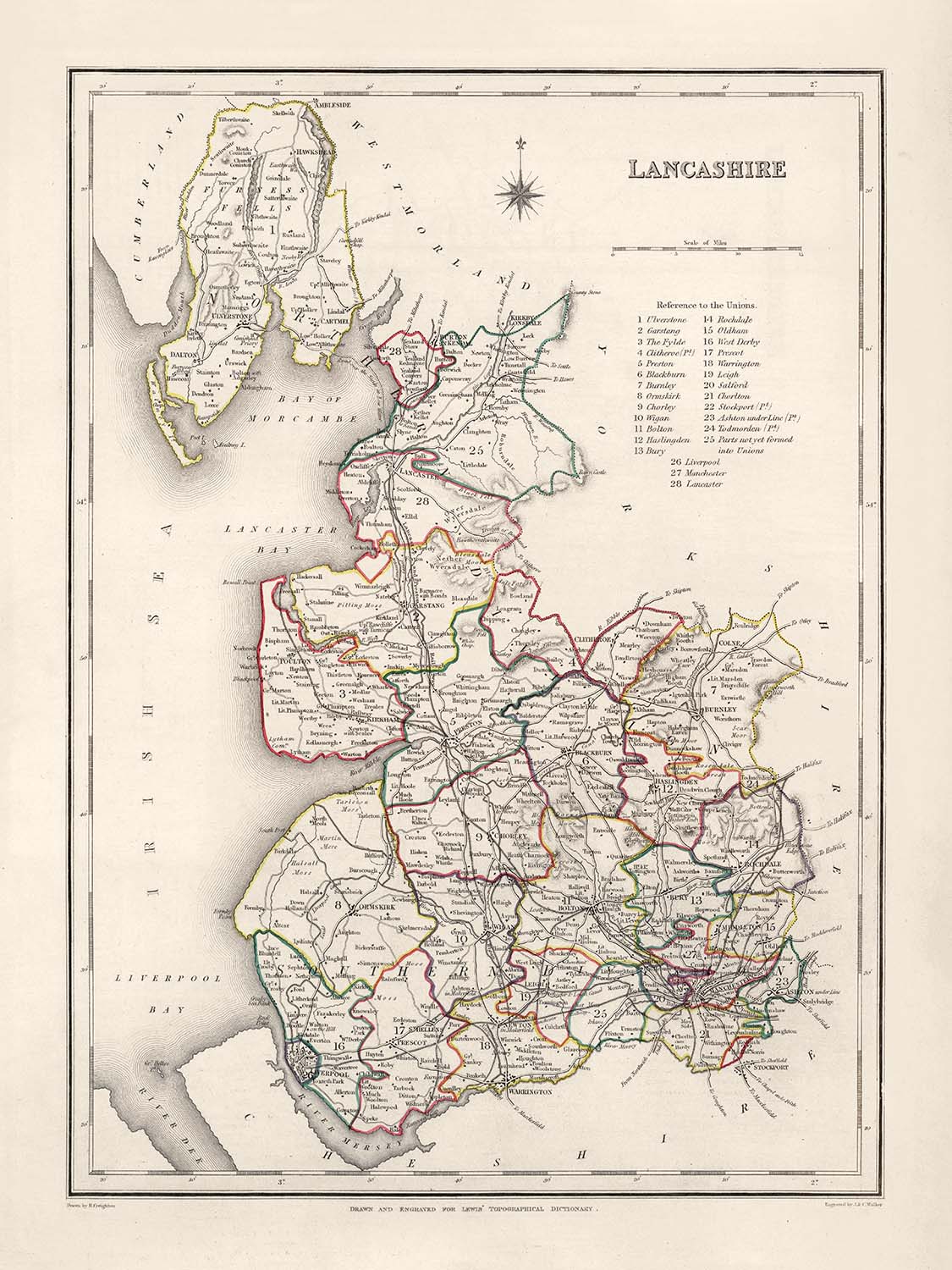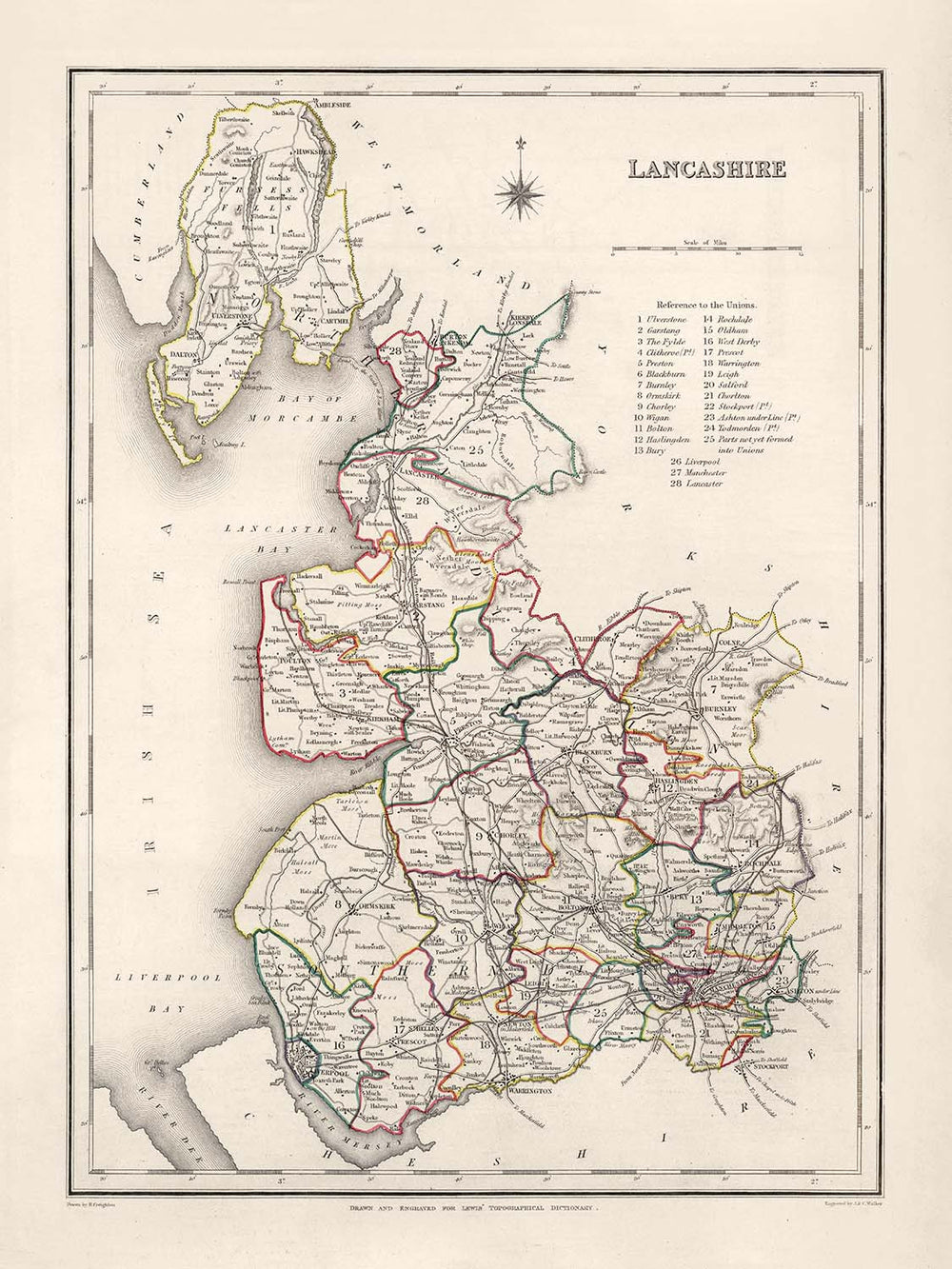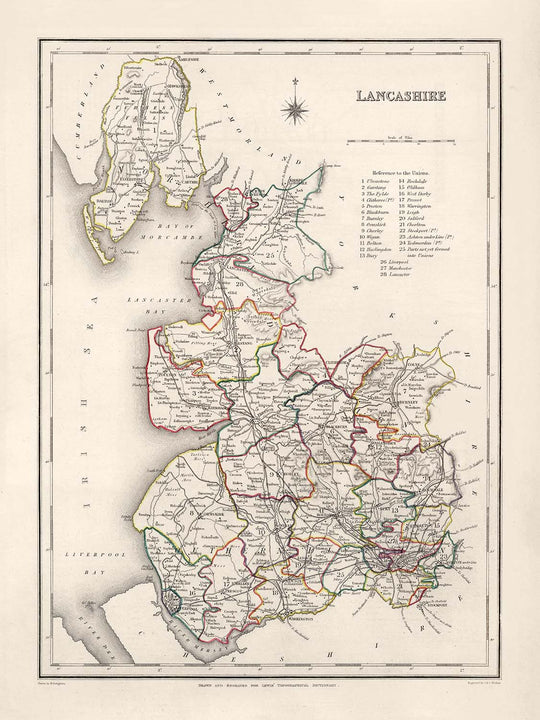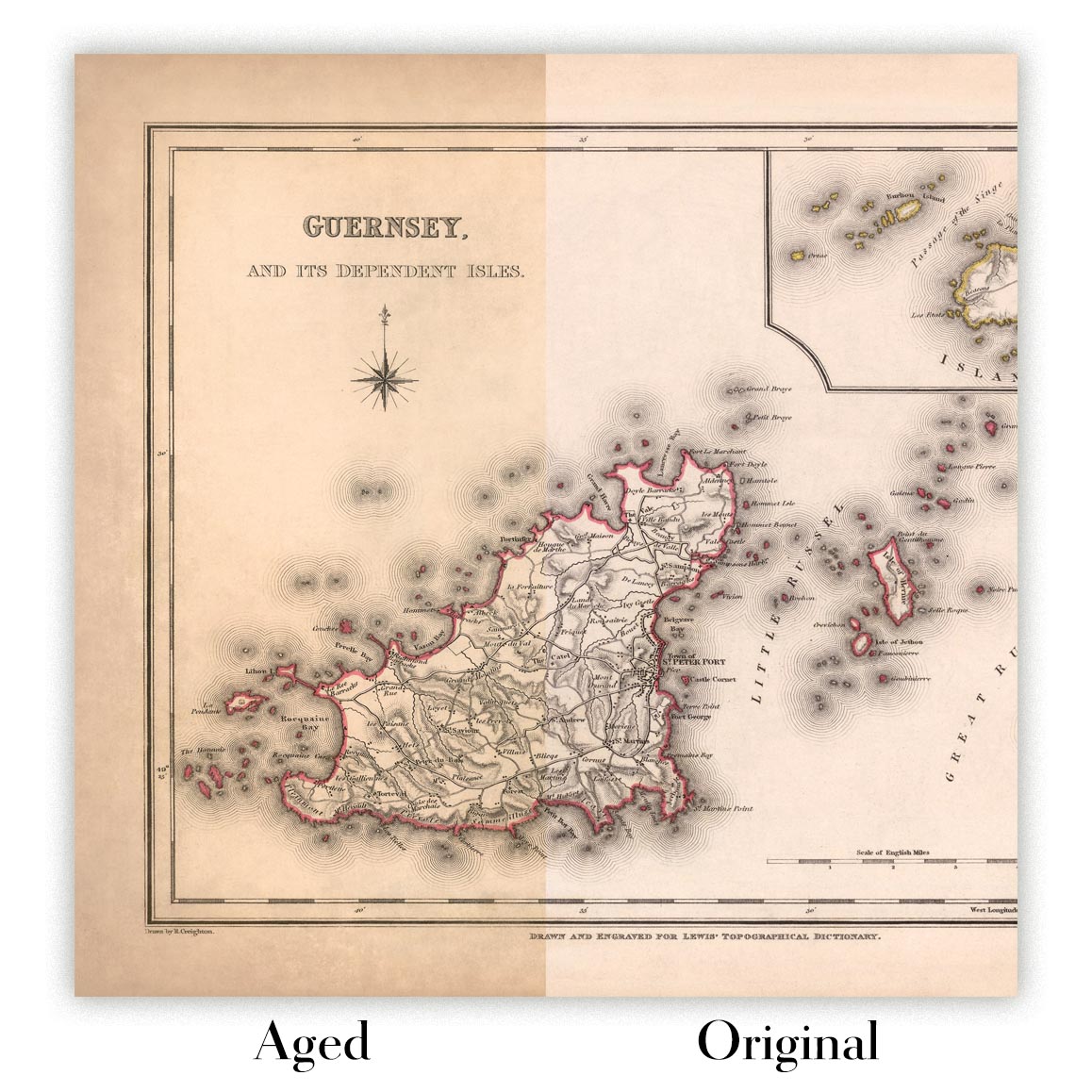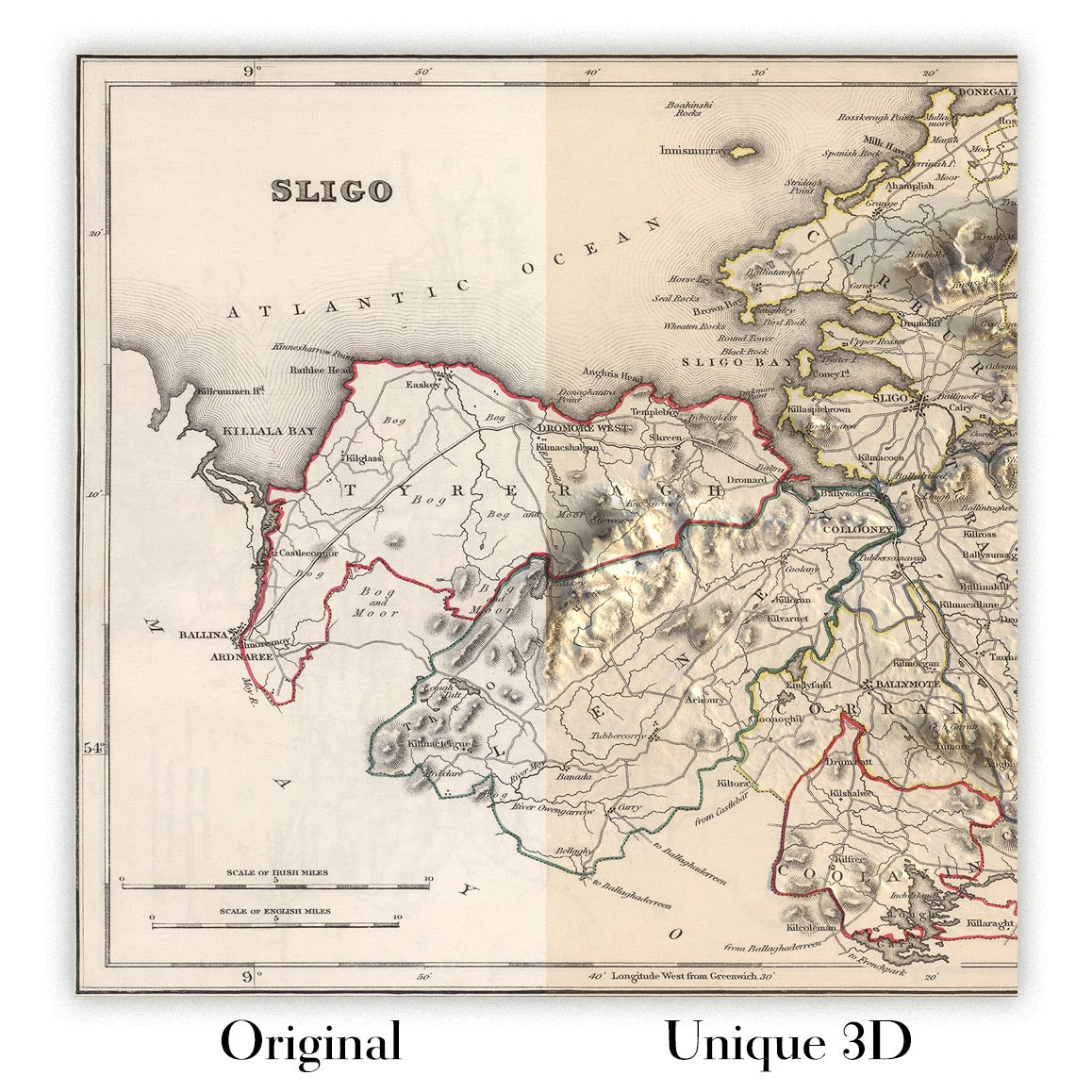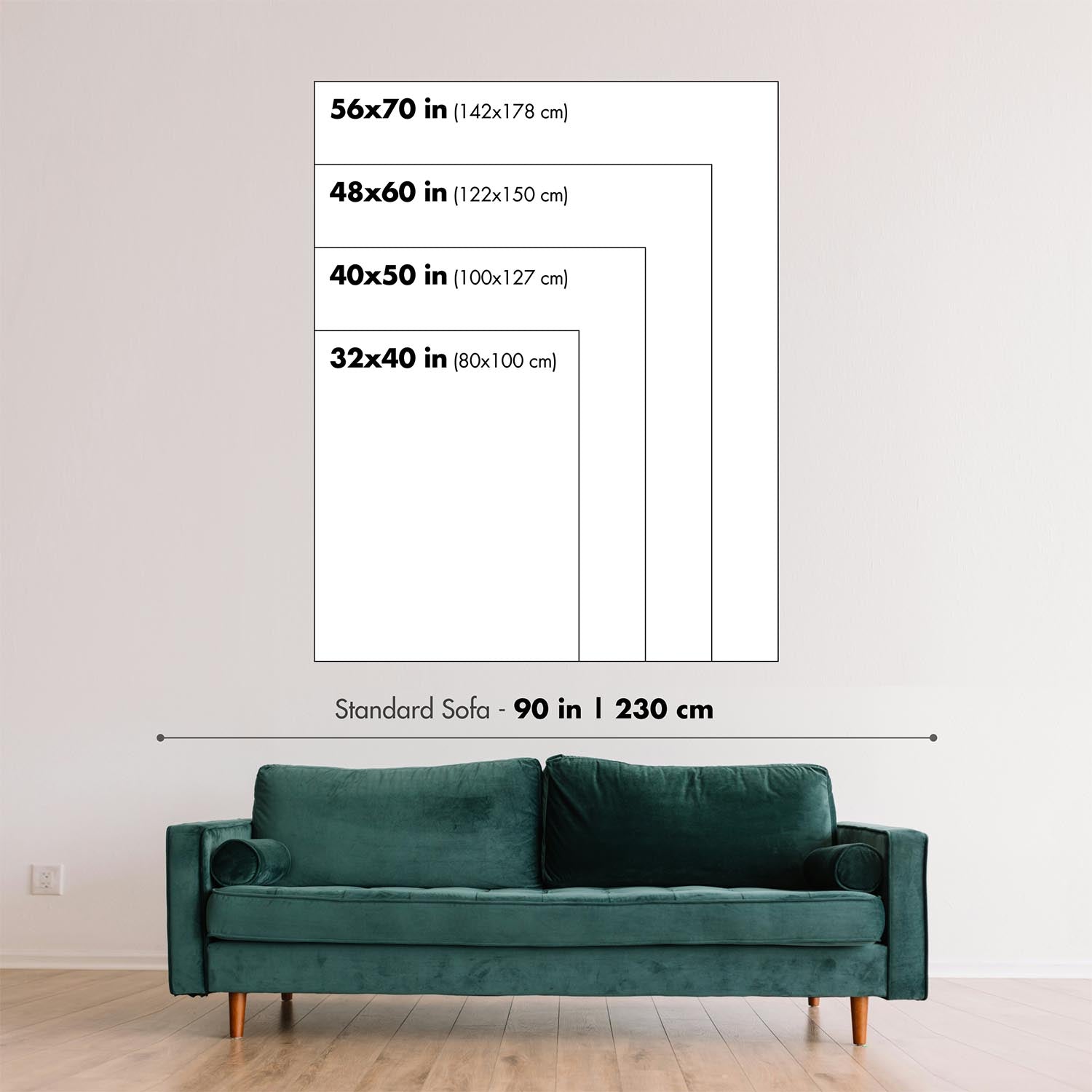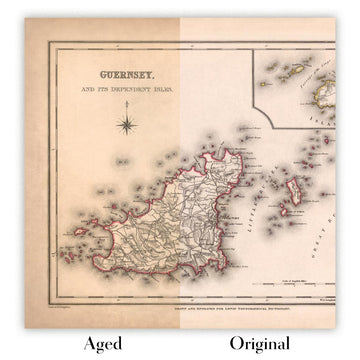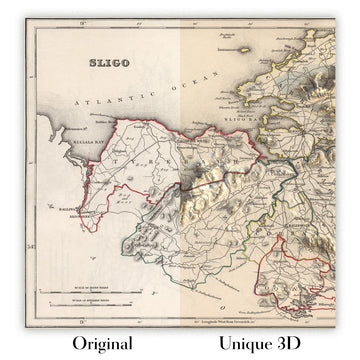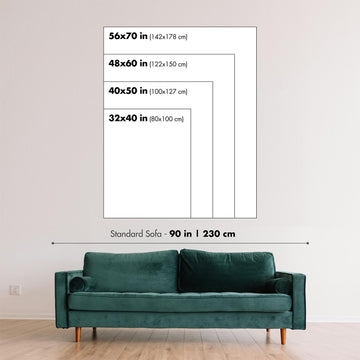- Handmade locally. No import duty or tax
- FREE Delivery by Christmas
- Love it or your money back (90 days)
- Questions? WhatsApp me any time
Own a piece of history
5,000+ 5 star reviews


Step into a world that intertwines rich history and cartographic artistry with this exquisite 1844 map of Lancashire, meticulously crafted by Samuel Lewis. Beyond its impressive detailing and superb accuracy, this map offers a unique snapshot of a bygone era, displaying settlements in their early development, some of which bear names that have since changed. The Lancashire of the past comes alive in this map, a reminder of the remarkable evolution of our cities, towns, and villages, and the ever-changing human landscape.
Whether you're a history enthusiast, a collector of antique maps, or someone who appreciates the interplay of geography and history, this piece is more than a map—it's a story, a journey through time. You'll discover some modern cities may not appear, or perhaps intriguingly, they're there but under an earlier name. This beautifully preserved artifact serves as a tangible connection to our collective past, providing insights into the formation and growth of the settlements within the county.
Settlements:
- Manchester (Roman period, around AD 79) - Notable for its significant role during the Industrial Revolution, it was a major centre for textile manufacturing.
- Liverpool (1207) - Known for its major port, the city played a significant role in transatlantic trade and migration.
- Preston (1179) - The town is historically significant for the 'Preston Guild', a celebration dating back to 1179.
- Blackburn (1086) - Documented in the Domesday Book, it became a major textile town during the Industrial Revolution.
- Oldham (9th century) - Known for its textile industries during the Industrial Revolution.
- Bolton (12th century) - Famed for its production of textiles, particularly cotton.
- Wigan (1246) - Historically part of Lancashire, it's known for its coal mining and clock making industries.
- Rochdale (1086) - Notable for Rochdale Pioneers who started the modern Cooperative movement.
- Bury (1086) - Known for its open-air market, one of the most successful in the UK.
- Lancaster (Roman period) - A historic city with a prominent university and a castle.
- Salford (before 1142) - Known for its historic role as a port and a factory town.
- Burnley (1122) - Famous for its mills during the Industrial Revolution.
- Stockport (1170) - A historic town known for its hatting industry.
- Blackpool (1602) - A famous seaside resort and entertainment hub.
- Southport (1792) - A popular seaside resort noted for its Victorian architecture.
- St. Helens (1246) - Known for glassmaking since the 17th century.
- Morecambe (1846) - Notable as a seaside resort in the Victorian era.
- Lytham St Annes (7th century) - A popular coastal town known for its golf courses.
- Ormskirk (1199) - Known for its gingerbread and historic markets.
- Skelmersdale (1086) - Noted for its growth as a 'New Town' in the 1960s.
- Darwen (1086) - A historic mill town.
- Clitheroe (1086) - Famous for Clitheroe Castle, claimed to be the smallest Norman castle in England.
- Fleetwood (1836) - A Victorian era seaside resort and fishing port.
- Accrington (1086) - Known for its production of the hardest and densest building bricks in the world.
- Rawtenstall (late 18th century) - A former mill town known for the East Lancashire Railway.
- Poulton-le-Fylde (1086) - A small market town known for its historic buildings.
- Nelson (1846) - Known for its historic cotton mills.
- Colne (1122) - A vibrant market town located at the end of the Leeds and Liverpool Canal.
- Haslingden (12th century) - Known for its wool and cloth weaving industries.
- Adlington (1086) - A small town known for its three mills during the Industrial Revolution.
Notable Natural Features:
- The Ribble Valley and River Ribble: Known for their scenic beauty and popular walking routes.
- The Forest of Bowland: A designated Area of Outstanding Natural Beauty.
- The West Pennine Moors: A large area of moorland and reservoirs popular for hiking.
- The Leeds and Liverpool Canal: The longest canal in Northern England.
Historical Events (1800-1850):
- 1819: The Peterloo Massacre occurred in Manchester.
- 1830: The opening of the Liverpool to Manchester railway, the first to rely exclusively on steam power, have a double track for most of its length and carry both passengers and freight.
- 1842: The Plug Plot Riots, a general strike by workers spread across Lancashire.
- 1844: The year of our map's creation. At this time, Lancashire was witnessing the zenith of the Industrial Revolution.
Please double check the images to make sure that a specific town or place is shown on this map. You can also get in touch and ask us to check the map for you.
This map looks great at all sizes: 8x10in (20.5x25.5cm), 12x16in (30.5x41cm), 18x24in (45.5x61cm), 16x20in (40.5x51cm), 24x36in (61x91.5cm), 30x40in (76x101.5cm) and 37x50in (94x127cm), but it looks even better when printed large.
I can create beautiful, large prints of this map up to 50in (127cm). Please get in touch if you're looking for larger, customised or different framing options.
The model in the listing images is holding the 18x24in (45.5x61cm) version of this map.
The fifth listing image shows an example of my map personalisation service.
If you’re looking for something slightly different, check out my main collection of UK and Ireland maps.
Please contact me to check if a certain location, landmark or feature is shown on this map.
This would make a wonderful birthday, Christmas, Father's Day, work leaving, anniversary or housewarming gift for someone from the areas covered by this map.
This map is available as a giclée print on acid free archival matte paper, or you can buy it framed. The frame is a nice, simple black frame that suits most aesthetics. Please get in touch if you'd like a different frame colour or material. My frames are glazed with super-clear museum-grade acrylic (perspex/acrylite), which is significantly less reflective than glass, safer, and will always arrive in perfect condition.
This map is also available as a float framed canvas, sometimes known as a shadow gap framed canvas or canvas floater. The map is printed on artist's cotton canvas and then stretched over a handmade box frame. We then "float" the canvas inside a wooden frame, which is available in a range of colours (black, dark brown, oak, antique gold and white). This is a wonderful way to present a map without glazing in front. See some examples of float framed canvas maps and explore the differences between my different finishes.
For something truly unique, this map is also available in "Unique 3D", our trademarked process that dramatically transforms the map so that it has a wonderful sense of depth. We combine the original map with detailed topography and elevation data, so that mountains and the terrain really "pop". For more info and examples of 3D maps, check my Unique 3D page.
For most orders, delivery time is about 3 working days. Personalised and customised products take longer, as I have to do the personalisation and send it to you for approval, which usually takes 1 or 2 days.
Please note that very large framed orders usually take longer to make and deliver.
If you need your order to arrive by a certain date, please contact me before you order so that we can find the best way of making sure you get your order in time.
I print and frame maps and artwork in 23 countries around the world. This means your order will be made locally, which cuts down on delivery time and ensures that it won't be damaged during delivery. You'll never pay customs or import duty, and we'll put less CO2 into the air.
All of my maps and art prints are well packaged and sent in a rugged tube if unframed, or surrounded by foam if framed.
I try to send out all orders within 1 or 2 days of receiving your order, though some products (like face masks, mugs and tote bags) can take longer to make.
If you select Express Delivery at checkout your order we will prioritise your order and send it out by 1-day courier (Fedex, DHL, UPS, Parcelforce).
Next Day delivery is also available in some countries (US, UK, Singapore, UAE) but please try to order early in the day so that we can get it sent out on time.
My standard frame is a gallery style black ash hardwood frame. It is simple and quite modern looking. My standard frame is around 20mm (0.8in) wide.
I use super-clear acrylic (perspex/acrylite) for the frame glass. It's lighter and safer than glass - and it looks better, as the reflectivity is lower.
Six standard frame colours are available for free (black, dark brown, dark grey, oak, white and antique gold). Custom framing and mounting/matting is available if you're looking for something else.
Most maps, art and illustrations are also available as a framed canvas. We use matte (not shiny) cotton canvas, stretch it over a sustainably sourced box wood frame, and then 'float' the piece within a wood frame. The end result is quite beautiful, and there's no glazing to get in the way.
All frames are provided "ready to hang", with either a string or brackets on the back. Very large frames will have heavy duty hanging plates and/or a mounting baton. If you have any questions, please get in touch.
See some examples of my framed maps and framed canvas maps.
Alternatively, I can also supply old maps and artwork on canvas, foam board, cotton rag and other materials.
If you want to frame your map or artwork yourself, please read my size guide first.
My maps are extremely high quality reproductions of original maps.
I source original, rare maps from libraries, auction houses and private collections around the world, restore them at my London workshop, and then use specialist giclée inks and printers to create beautiful maps that look even better than the original.
My maps are printed on acid-free archival matte (not glossy) paper that feels very high quality and almost like card. In technical terms the paper weight/thickness is 10mil/200gsm. It's perfect for framing.
I print with Epson ultrachrome giclée UV fade resistant pigment inks - some of the best inks you can find.
I can also make maps on canvas, cotton rag and other exotic materials.
Learn more about The Unique Maps Co.
Map personalisation
If you're looking for the perfect anniversary or housewarming gift, I can personalise your map to make it truly unique. For example, I can add a short message, or highlight an important location, or add your family's coat of arms.
The options are almost infinite. Please see my map personalisation page for some wonderful examples of what's possible.
To order a personalised map, select "personalise your map" before adding it to your basket.
Get in touch if you're looking for more complex customisations and personalisations.
Map ageing
I have been asked hundreds of times over the years by customers if they could buy a map that looks even older.
Well, now you can, by selecting Aged before you add a map to your basket.
All the product photos you see on this page show the map in its Original form. This is what the map looks like today.
If you select Aged, I will age your map by hand, using a special and unique process developed through years of studying old maps, talking to researchers to understand the chemistry of aging paper, and of course... lots of practice!
If you're unsure, stick to the Original colour of the map. If you want something a bit darker and older looking, go for Aged.
If you are not happy with your order for any reason, contact me and I'll get it fixed ASAP, free of charge. Please see my returns and refund policy for more information.
I am very confident you will like your restored map or art print. I have been doing this since 1984. I'm a 5-star Etsy seller. I have sold tens of thousands of maps and art prints and have over 5,000 real 5-star reviews. My work has been featured in interior design magazines, on the BBC, and on the walls of dozens of 5-star hotels.
I use a unique process to restore maps and artwork that is massively time consuming and labour intensive. Hunting down the original maps and illustrations can take months. I use state of the art and eye-wateringly expensive technology to scan and restore them. As a result, I guarantee my maps and art prints are a cut above the rest. I stand by my products and will always make sure you're 100% happy with what you receive.
Almost all of my maps and art prints look amazing at large sizes (200cm, 6.5ft+) and I can frame and deliver them to you as well, via special oversized courier. Contact me to discuss your specific needs.
Or try searching for something!







